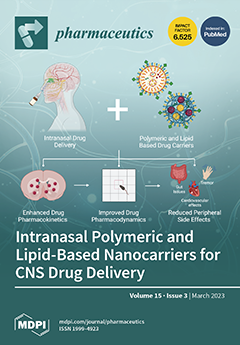The incidence rate of malaria and the ensuing mortality prompts the development of novel antimalarial drugs. In this work, the activity of twenty-eight Amaryllidaceae alkaloids (
1–28) belonging to seven different structural types was assessed, as well as twenty semisynthetic derivatives of
[...] Read more.
The incidence rate of malaria and the ensuing mortality prompts the development of novel antimalarial drugs. In this work, the activity of twenty-eight Amaryllidaceae alkaloids (
1–28) belonging to seven different structural types was assessed, as well as twenty semisynthetic derivatives of the β-crinane alkaloid ambelline (
28a–28t) and eleven derivatives of the α-crinane alkaloid haemanthamine (
29a–29k) against the hepatic stage of
Plasmodium infection. Six of these derivatives (
28h,
28m,
28n and
28r–28t) were newly synthesized and structurally identified. The most active compounds, 11-
O-(3,5-dimethoxybenzoyl)ambelline (
28m) and 11-
O-(3,4,5-trimethoxybenzoyl)ambelline (
28n), displayed IC
50 values in the nanomolar range of 48 and 47 nM, respectively. Strikingly, the derivatives of haemanthamine (
29) with analogous substituents did not display any significant activity, even though their structures are quite similar. Interestingly, all active derivatives were strictly selective against the hepatic stage of infection, as they did not demonstrate any activity against the blood stage of
Plasmodium infection. As the hepatic stage is a bottleneck of the plasmodial infection, liver-selective compounds can be considered crucial for further development of the malaria prophylactics.
Full article






